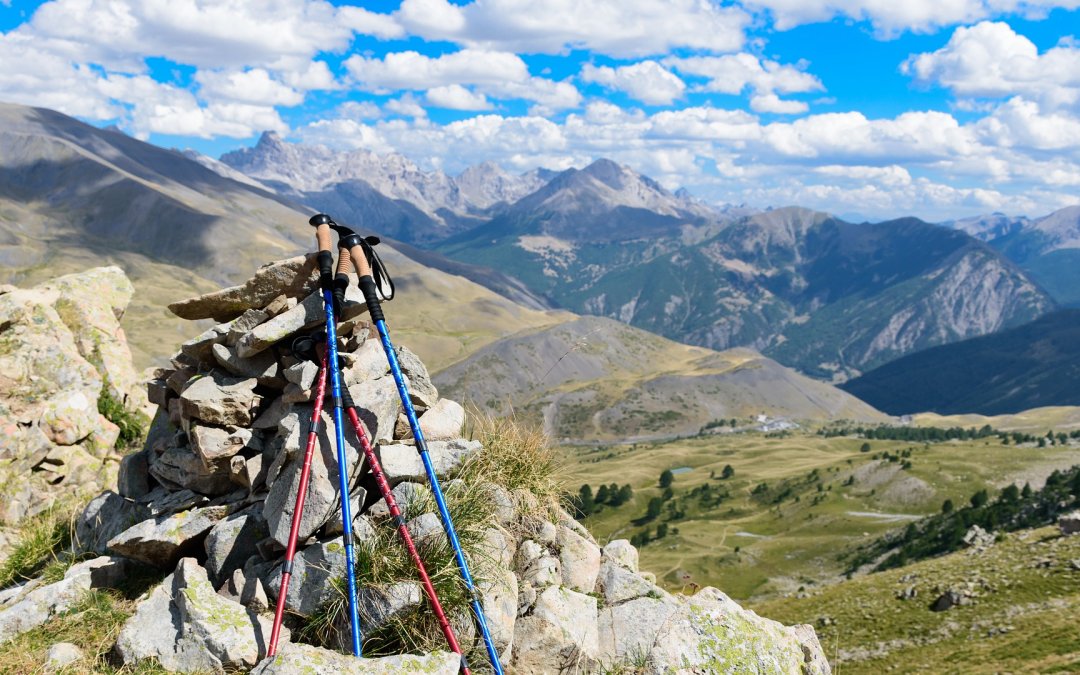PROS AND CONS OF WALKING POLES
Walking poles have become more popular at the start of the 21st century. This is partly due to the science that supports their benefits for people of all ages and experiences.
It has been shown that using walking poles will reduce the accumulated stress on the feet, legs, knees and back. This shares the load more evenly across the whole body. This is especially true when carrying a heavy pack on your back. So let’s cover the pros and cons of walking poles.

Let’s start with the cons because the pros are far more interesting:
- One of the downsides is that walking poles take up your hands. If you have poles in both or even one hand, it makes it harder to use a map and compass (although not read a GPS). But it can also make it harder to eat and drink without stopping. Or if you need to clamber over stiles etc without accidentally stabbing yourself or others.
- If you are needing to hand-over-hand climbing, poles can make it harder. Which may mean you need to put them in your pack.
- They are extra weight in your pack then if you’re not using them.
- Good poles are not cheap, up to $250 Australian for the latest brand made with the latest materials.
- The carbide tips on many trekking poles can dig into rock, leaving unsightly scratches, gouges and chips in rock formations.
- Poles can catch on trees and shrubs.
Now let’s cover the pros:
- When you’re going up, poles help the transfer of power from the upper body through the arms to make walking uphill easier. Just picture a cross country skier. This works for slopes of all gradients. Although to get the most from your poles, you may want to adjust the length so they are shorter for steeper hills.
- Therefore, when heading downhill, using the poles to both balance and take some of the impact can help reduce the muscle soreness often linked to walking downhill.
- When walking downhill, and to a lesser extent on level ground, poles take off some of the load on your joints.
- Walking poles offer greater balance over rocky, loose terrain or when crossing rivers. Poles can add a balance point, giving much greater stability – think the 3 points of contact climbing rule.
- Studies quoted by the manufacturers of poles suggest there can be up to 7kgs pressure per step when using walking poles. It’s also claimed to take 25% of body weight through the pole – reducing the load through the hips and knees.
- A consistent finding is that 20% of calaories are burnt by using your upper body muscles.
- Many people find they walk faster and the walking feels easier with poles because the poles seem to enable people to adopt a more normal walking gait, with longer and quicker strides.
- Poles have also been used to help pitch tarps or ultra light tents.
If you do decide to try walking with poles, the range of options is considerable, with top-end versions costing upwards of $250. For this you will get ultra-lightweight, collapsible carbon poles, or you can knock the third figure off and pay under $50 for a heavier, but still adjustable pair.
For more information on how to choose walking poles click here
Here is another article on Leave No Trace Principles you may find interesting. Click here



Recent Comments